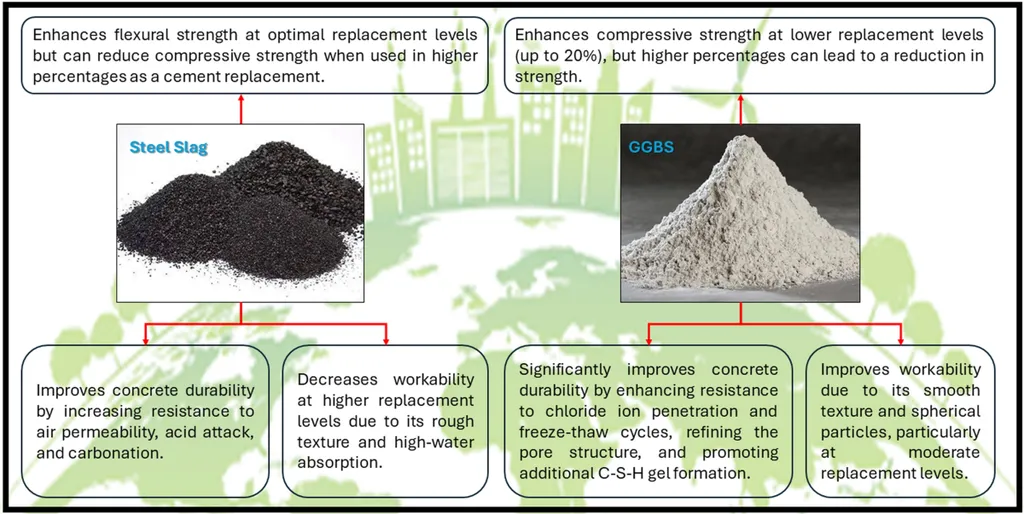In the quest for sustainable construction materials, researchers have uncovered promising potential in an unlikely candidate: steel slag. A recent study led by Adnan Khan from the Department of Civil Engineering at Tongji University, published in *Scientific Reports* (which translates to *Nature Research Reports* in English), has revealed that incorporating steel slag as a fine aggregate in concrete can significantly enhance both mechanical strength and durability, particularly in acidic environments. This breakthrough could reshape the construction industry’s approach to sustainable and resilient infrastructure, with far-reaching implications for the energy sector.
The study comprehensively evaluated the performance of concrete with varying levels of steel slag replacement—0%, 25%, 50%, 75%, and 100%—focusing on key mechanical properties such as compressive, tensile, flexural, and shear strengths. The findings were striking. “A 50% slag replacement achieved optimal mechanical performance, with the highest compressive and flexural strengths,” Khan explained. This mix not only improved tensile capacity but also demonstrated superior shear resistance, maintaining over 82% of the compressive strength of the control at 28 days. The 25% and 75% mixes also showed balanced strength and ductility characteristics, indicating a broad range of effective replacement levels.
One of the most compelling aspects of the study was its exploration of durability under acidic conditions. Using X-ray diffraction (XRD) analysis, the researchers found that slag-blended concretes retained key hydration products like Calcium silicate hydrate (C-S-H) and Quartz after exposure to sulfuric acid. This suggests that steel slag not only enhances mechanical properties but also improves chemical resistance. The study introduced a new durability index, integrating both mass loss and strength retention, which showed that the 50% slag mix had a durability index of 84.3%, significantly higher than the control’s 73.8%.
The implications for the energy sector are substantial. Infrastructure in this sector often faces harsh environmental conditions, including exposure to corrosive substances. The enhanced durability of slag-blended concrete could lead to longer-lasting, more resilient structures, reducing maintenance costs and improving safety. “This research underscores the potential of steel slag as a sustainable and high-performance alternative to natural sand in concrete production,” Khan noted. “It contributes to eco-friendly construction practices and enables the development of more durable concrete for aggressive environments and critical infrastructure applications.”
As the construction industry continues to seek sustainable solutions, this study provides a compelling case for the adoption of steel slag. The findings suggest that a 25–50% replacement level could offer the best balance of strength, durability, and sustainability. This could pave the way for innovative construction practices that not only reduce reliance on natural resources but also enhance the performance of critical infrastructure. The research highlights the importance of continued exploration into alternative materials and their potential to transform the industry.

